A follow-up to Adventures in Baby Sleep Training.
Every week, I get lots of comments and emails about one post in particular – the sleep training post. Desperate moms stumble across it in the wee hours of the night and email me to say, “HELP! How can I get my baby to sleep through the night?†Because if there’s one thing that most moms really, really crave – it’s sleep. For baby and for themselves!
Now, first of all, I’ve only done this once. ![]() And if there is one thing that I’m sure of, it’s that no two children are alike. What worked with Henry may not work with our next kiddo. But I do believe that the system I used with Henry is a great way to ‘teach’ babies that are old enough to sleep through the night to, well, sleep through the freaking night (STTN). And don’t get me wrong – there are probably lots of ways to encourage STTN. But I wasn’t interested in a method that would take months. I knew it was going to be a trying experience (for Henry and me both) and I wanted to get it over with quickly.
And if there is one thing that I’m sure of, it’s that no two children are alike. What worked with Henry may not work with our next kiddo. But I do believe that the system I used with Henry is a great way to ‘teach’ babies that are old enough to sleep through the night to, well, sleep through the freaking night (STTN). And don’t get me wrong – there are probably lots of ways to encourage STTN. But I wasn’t interested in a method that would take months. I knew it was going to be a trying experience (for Henry and me both) and I wanted to get it over with quickly.
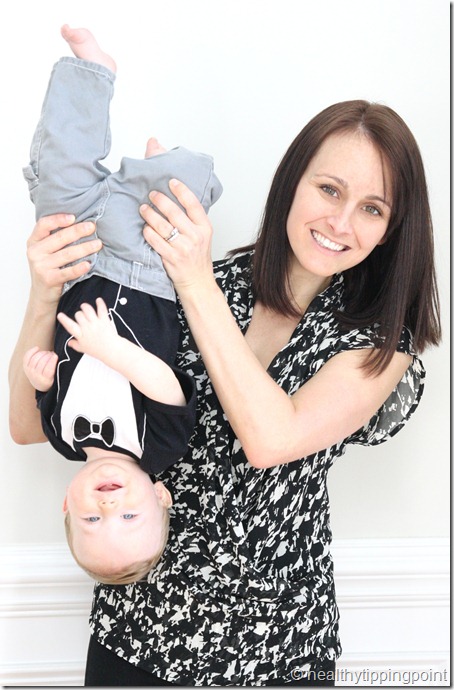
When I wrote the first sleep training post, I think I was a little convoluted. I overthought sleep training and thus overwrote the post. Basically, sleep training for us boiled down to:
- Making sure baby was ready (with doctor’s okay – small babies cannot physically STTN).
- Making sure what I was ready (emotionally!).
- Going cold turkey with nighttime feedings – no more bottles at night.
- Controlled checks when Henry woke up crying (basically, go in every 5 or 10 minutes).
- Controlled checks involved loving touches and reassuring words, but I tried to never pick him up.
- We sleep trained for naps first and then did nighttime.
The entire process took about five days or so, but it was much better after two nights. And now, over a year later, Henry is a great napper and sleeper. I am so grateful for sleep training!
In this post, I wanted to answer four common questions about Henry’s sleep. Up first – his sleep habits. I’ve had quite a few readers ask me to outline how his sleep changed before and after sleep training. Here it is!
Newborn – 2 months:
Slept on top of me, in bed with me, or in a bassinet next to our bed. Napped whenever, wherever. I fed on demand and never let him cry. He woke up 3 – 5 times a night to eat.
2 months – 5 months:
Transitioned him to the crib at night around 3 months (I think – details are fuzzy). Naps began to organized to three naps a day, which would occur on me, in a bassinet, in the stroller or carseat, or (when he was older) in his crib. I still fed on demand and never let him cry. He still woke up 3 – 5 times a night to eat. Kristien and I were so exhausted that we couldn’t even spell our own names.
5 months:
Sleep training began. He starts STTN. The adults in the home stop looking like they were hit by a bus 24/7. We are very grateful! Henry has early wake-ups (6:00 AM-ish) for many, many months. Naps three times a day, mostly in his crib but sometimes on-the-go. Naps are usually short – 45 minutes and occur every 2 – 3 hours. Has a real ‘bedtime’ for the first time ever (7:30 PM); his bedtime has always stayed the same.
7 months – 10 months:
Still STTN consistently. Wakeups are getting later (side note: he started to walk at 7 months and could walk independently all the time at 9 months; later wakeups definitely coincided with the increase in physical activity). Naps two times a day, both in the crib. Naps start to get a little longer but not much.
11 months – Now (19 months):
Sleep is now divine all around. Henry goes to bed at 7:30 PM and gets up around 6:45 – 7:30 AM. He has transitioned to one nap. Nap is consistently a long one (2 – 3 hours) and starts anytime between 11 AM – 12 PM.
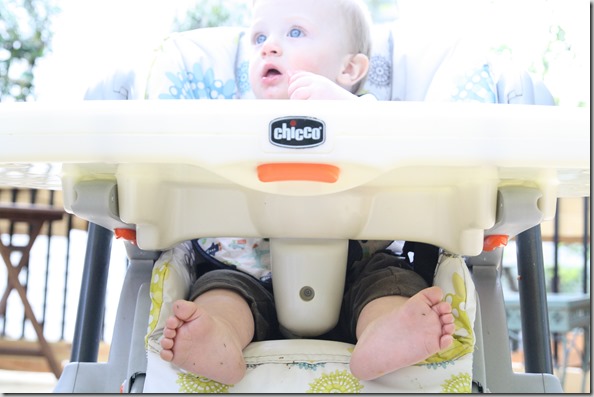
Readers have also asked me how teething or sickness impacts sleep training. The short answer is that I always comfort Henry if he is hurt, scared, or sick. Of course! If he’s ill and we have a few nights of “Wahh Wahh! I don’t feel good! Oh, here’s mommy! Yay!â€, we have to go back to the sleep training principles once he’s better. But he usually figures it out again really fast. Also, when he was younger, I could always tell the difference between a roll-over-and-simply-cry cry and a “I need you!†cry. Now that he can talk, he will wake up and call for me if he really needs me (like the other night, he woke up and yelled, “Mommy! Diaper! Diaper! Diaper!â€). I think you just have to trust your gut.
And next, lots of people have asked about the one nap transition. I wish I had wise words to offer about how to know when your baby is ready to go to one nap, but I don’t really. Again – just follow your instinct. Our transition occurred rather fast and was entirely lead by Henry. I do think that we just got lucky in this regard; I know it’s really hard on a lot of toddlers. Maybe some of you can weigh in on this in the comments section?
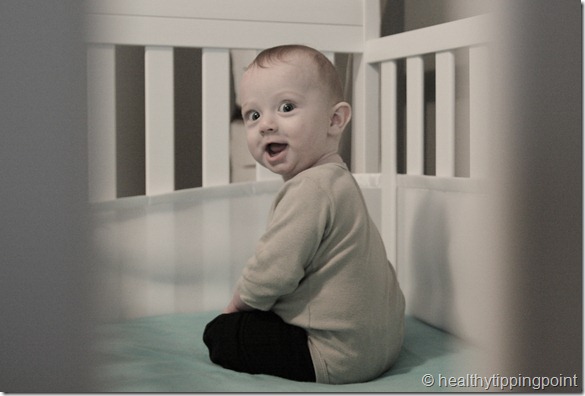
Last, but not least, I thought I’d share some of my favorite sleep training tips (again, age and weight are very important factors in sleep training so PLEASEEEEEEEEEEE, please, please get your doctor’s okay first):
Get breathable bumpers so you don’t have to worry about baby trapping his or her limbs in the crib.
If you don’t think you can handle the crying associated with sleep training, ask your partner to do it. Or you can turn off the monitor when the crying begins and set an alarm to turn it back on when the 5 – 10 minute interval is over.
I really valued the book Healthy Sleep Habits, Happy Child and still refer to it regularly.
Even if you aren’t ready to sleep train, consider taking a brief pause before rushing up to your baby, especially if you know they aren’t hungry or should still be sleeping. I can’t tell you how often Henry puts himself back to sleep after a minute or two of whining.
Trust your gut. You know your child best. If things feel really off one night, it’s okay to throw the principles out the window and go comfort him or her as long as necessary. That being said… consistency is very important. Don’t half-ass sleep training. It’s very confusing to a child.
If you sleep train in a loving, thoughtful way, your child is going to be just fine. There’s a way to do it (controlled checks) that isn’t mean or cruel. If you want to sleep train but struggle with the idea of having your child cry, remember that you are helping them learn an important skill (self-soothing to go back to sleep).
It’s okay if your friends use different methods or don’t believe in sleep training at all. Different parents have different viewpoints. No one is right or wrong. We have unique situations and challenges. Some of us take the sleep deprivation really hard (me) and need to have baby STTN as soon as possible. Some of us work away from home and don’t mind getting up twice a night because it’s special mommy/baby time. Some of us prefer cosleeping, sharing a big family bed, and don’t mind feeding baby throughout the night. That’s cool; different strokes and whatnot.
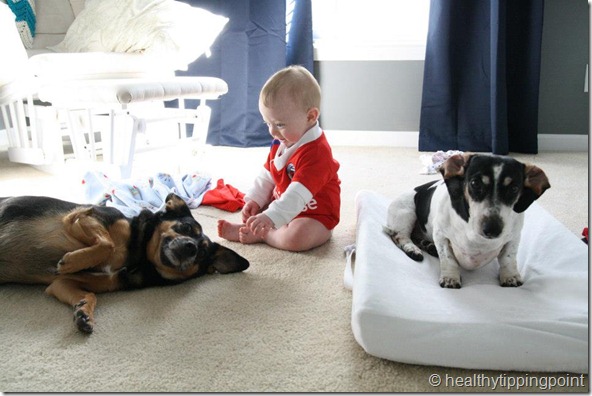
So – that’s that! A summary of our baby sleep journey thus far. I am excited to hear your tips and advice; I would love to hear from parents who sleep trained and those who didn’t, too. What lessons have you learned about baby sleep?

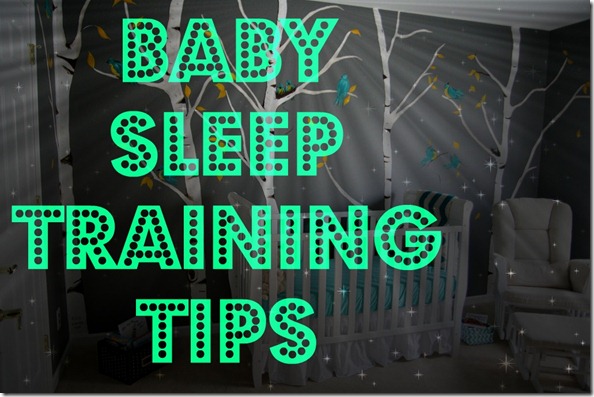
I have learned to never get comfortable and confident with sleep “schedules” hahah 🙂 Honestly, for us — which is, admittedly, a somewhat unique situation, it’s been rocky. Ada was a champion sleeper from 6 months to 22 months. Then, even before surgery, she started just . . . not being one. She will do OK now, but has trouble going down at night (sometimes up to 1 hour!) and then wakes between 5:30 and 8:15. There are periods when it’s great and times when it’s horrible. And now that she has all her teeth, there are fewer excuses! Grrr. Part of the trouble at our house is that we live in a small space and there’s often lots of outdoor noise from neighbors, and a lot of that stuff is what jostles her from otherwise “good” naps/nights.